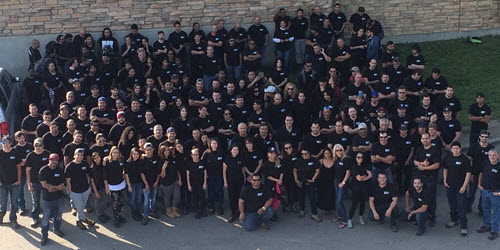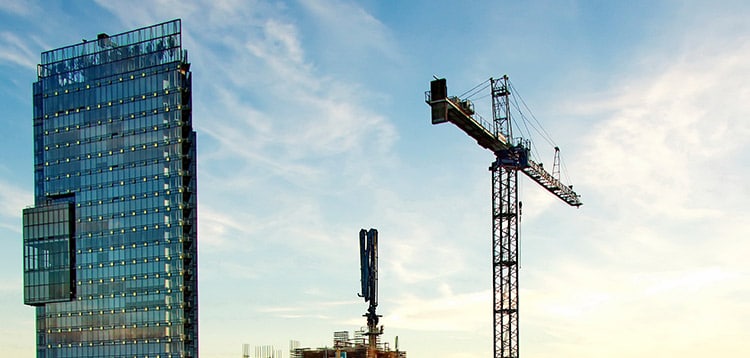- OUR APPROACH
-
COMMITTED TO YOUR SUCCESS
Our approach, developed over decades of experience, is fine-tuned to get the results you want.
We deliver concept-to-completion solutions, designed by temporary power specialists with access to the largest inventory of high-quality power generation and distribution equipment in North America.
-
- Equipment
-
RENTALS
From a wide range of diesel and natural gas generators to transformers, cable, light towers and more, our large rental fleet and extensive vendor network ensure we’ll have the temporary power equipment that your project requires — every time.

-
- Industries
-
INDUSTRIES WE SERVE
For nearly 20 years, we have been at work powering projects across Canada’s industrial sectors.
Select from this sampling of industries to learn how we can put our expertise to work for you.
VIEW ALL- Projects
- About
-
A PROUD HISTORY. A BRIGHT FUTURE.
From our inception in 1998, we have been building our team on a foundation of excellence. Our team members’ passion, expertise and commitment are what have allowed us to grow into a national company with projects across Canada.
Click on the links to learn more about our history, our team or our career opportunities.
- Blog
- Contact
-
Table Of Contents:
- Common Damage Concerns During Winter
- Poultry Farm Suffers Fire & Smoke Damage
- Hydro Vault Explosions
- Fort McMurray Wildfires
Fires, floods and tornadoes -disaster can strike at any time. And while an emergency preparedness plan can go a long way towards mitigating the impact, sometimes even the best-laid plans can’t prevent damage to a site.
Enter Access Restoration Services.
Founded in 1959 as a general contracting company with a commitment to doing good work, ARS has evolved to become Ontario’s leading disaster mitigation and restoration company.
From fire or water damage to natural disasters and biohazardous materials, ARS provides a comprehensive range of property restoration services to industrial, commercial and institutional clients. Because of the company’s extensive experience in the field, they have a special focus on complex and technically challenging projects.
With the primary goal of minimizing business interruption, ARS designs and carries out complete restoration solutions, starting at day one with damage and safety assessment, and carrying through to complete restoration.
When it comes to restoration, Nathan Normoyle, VP of National Operations at ARS, really has seen it all. We spoke with him about the most common winter disasters, and the most unusual projects ARS has encountered. From futuristic poultry to a natural disaster that had North America holding its breath, these projects are not your typical day at the office.
Fire and Ice
“There are a number of things that the winter season has an impact on,” explains Normoyle. “The frequency of fires and smoke damage increases as it’s heating season.” From gas burning heaters to wood stoves, the prevalence of heating equipment being used during the colder months leads to more fires. But it’s not just heaters that cause winter fires. “As we approach Christmas time, it’s not just people in houses that put up Christmas trees, but also businesses,” Normoyle explains. “We see a drastic increase in fires that are resulting from Christmas trees or the associated electrical setup for Christmas trees and other decorations.”
Fires aren’t the only disasters that multiply when the temperatures drop. Frozen pipes are another common winter worry. Says Normoyle, “Plumbing doesn’t like cold weather, so if it isn’t insulated properly, or let’s say the heat source is down for a day in a building or a home, that increases the frequency of frozen pipes, which causes significant water damage.”
While fire, smoke and water damage are the most common restoration projects that ARS faces, we wanted to know what their most unusual cases were. And they did not disappoint.
Birds of a Feather
No business is safe from the threat of fire, and that includes poultry farms. But when the poultry is state of the art, the restoration crew needs to tread as lightly as a feather.
Recently, ARS was called to a chicken hatchery that had suffered extensive fire and smoke damage. But it was no ordinary poultry facility. “These are considered the perfect chicken,” says Normoyle, “So we had to work around these genetically perfect birds to ensure that the facility was able to continue operating, and that we didn’t cause damage to the stock with our restoration methods.”
This was no small feat.
“Anyone who owns a bird knows that if you leave a window open and there’s a cold draft, that’s enough to kill a bird,” explains Normoyle. “So it’s a very delicate environment to work in.”
Not only was the environment a delicate one, but because the birds in question were particularly valuable stock, extra precautions had to be taken. “The facility was considered hermetically sealed,” says Normoyle, “So the crew was walking around in hazmat suits, in amongst maybe 20 or 30 thousand of these perfect chickens. That’s definitely one that we don’t see every day.”
Because of the delicate nature of the project, restoration took nearly 5 months. But the result was happy chickens, and a happy customer. “It was a successful project and the client left very happy, with minimal business interruption, which was the goal,” says Normoyle. “So it was a win-win.”
One Explosion, 12 Floors, 250,000 Square Feet
In 2017, the hydro vault of a commercial office building exploded — ironically, due to flooding. ARS was called in to handle the fallout. “Basically, the underground pathways and electrical rooms of the building were filled with water due to flooding above on the street level,” explains Normoyle, “and that caused a severe explosion, which blew up and set on fire the hydro vault and the wiring that runs from the hydro vault into the underground of the building.”
Like the the wick on a stick of dynamite, the fire traveled along the wiring, filling the building’s 12 floors with toxic electrical smoke.
“There were several thousand people who worked there,” says Normoyle. “So several thousand workstations. If you can imagine: 2000 desks, computers, and all the office equipment. And we had to move the whole building into a temporary facility to allow it to continue to operate.”
That’s exactly what ARS did. In order to minimize their client’s loss of revenue, the crew relocated all 250,000 square feet of workspace into temporary facilities for the duration of the restoration.
“It was a very technically complicated project,” says Normoyle. “It lasted approximately 15 months and at the same time we were on a very very tight deadline.”
A City in Flames and a Nation Looking On
At the beginning of May, 2016, wildfires swept through Fort McMurray, forcing the largest evacuation in Alberta’s history, as approximately 88,000 people fled their homes. Arriving on day 8 of the evacuation, ARS was the first restoration company on the ground in Fort McMurray.
“We were on site while the fires were still burning in the city,” recalls Mormoyle. “Eight days after the initial evacuation, we were on the ground with approximately 400 staff; we were responsible for restoring a large portion of the infrastructure for the hospitality industry.”

This included nine different hotels and a number of commercial and industrial buildings throughout the city. ARS had done many fire and smoke restoration projects before, but nothing quite like this.
“Because the city was evacuated, there was no fuel, there was no food, and very limited accommodations,” says Normoyle. “So we took over a full hotel that was empty; there was no service, no staff, nothing, and our staff were housed in that building.”
In order to feed the crew, ARS had to hire an off-site catering company who set up a field kitchen 100 kilometres outside of town, and trucked meals in three times a day.
Fuel was also an issue. “We brought our own fuel supply in the form of fuel trailers with battery pumps,” explains Normoyle. “So every time a vehicle needed fuel, you would have to get out, connect the cable to a battery, and basically pump fuel out of this temporary storage tank into the truck. And we did that for the better part of 30 days until the evacuation order was lifted.”
The job wasn’t an easy one, but for ARS, it was well worth it. “We were able to make a significant contribution to allow the city to get back to its normal operations,” says Normoyle, “so it was a unique and rewarding experience for us as a company.”
Related Articles
Subscribe for access to exclusive content
"*" indicates required fields



















